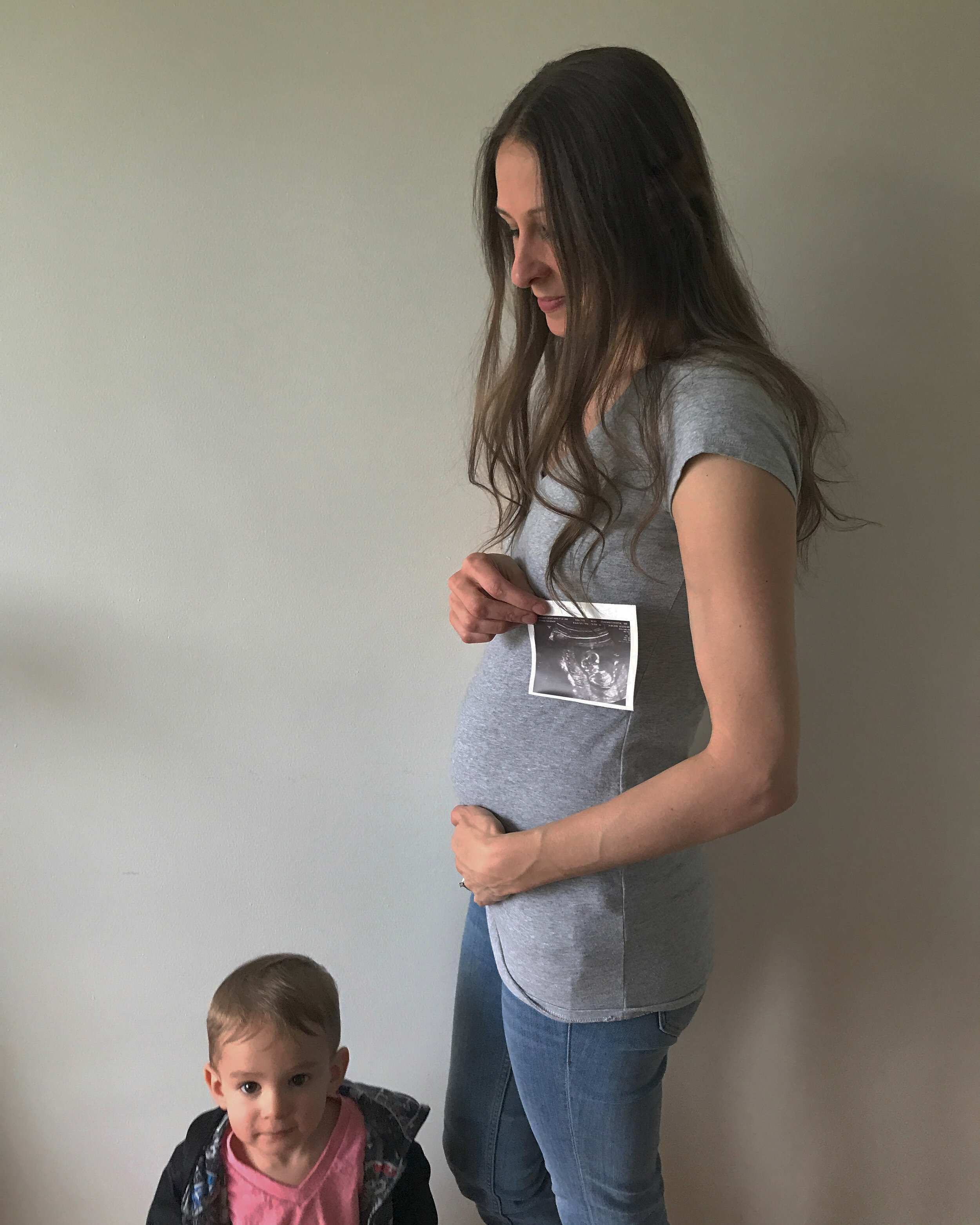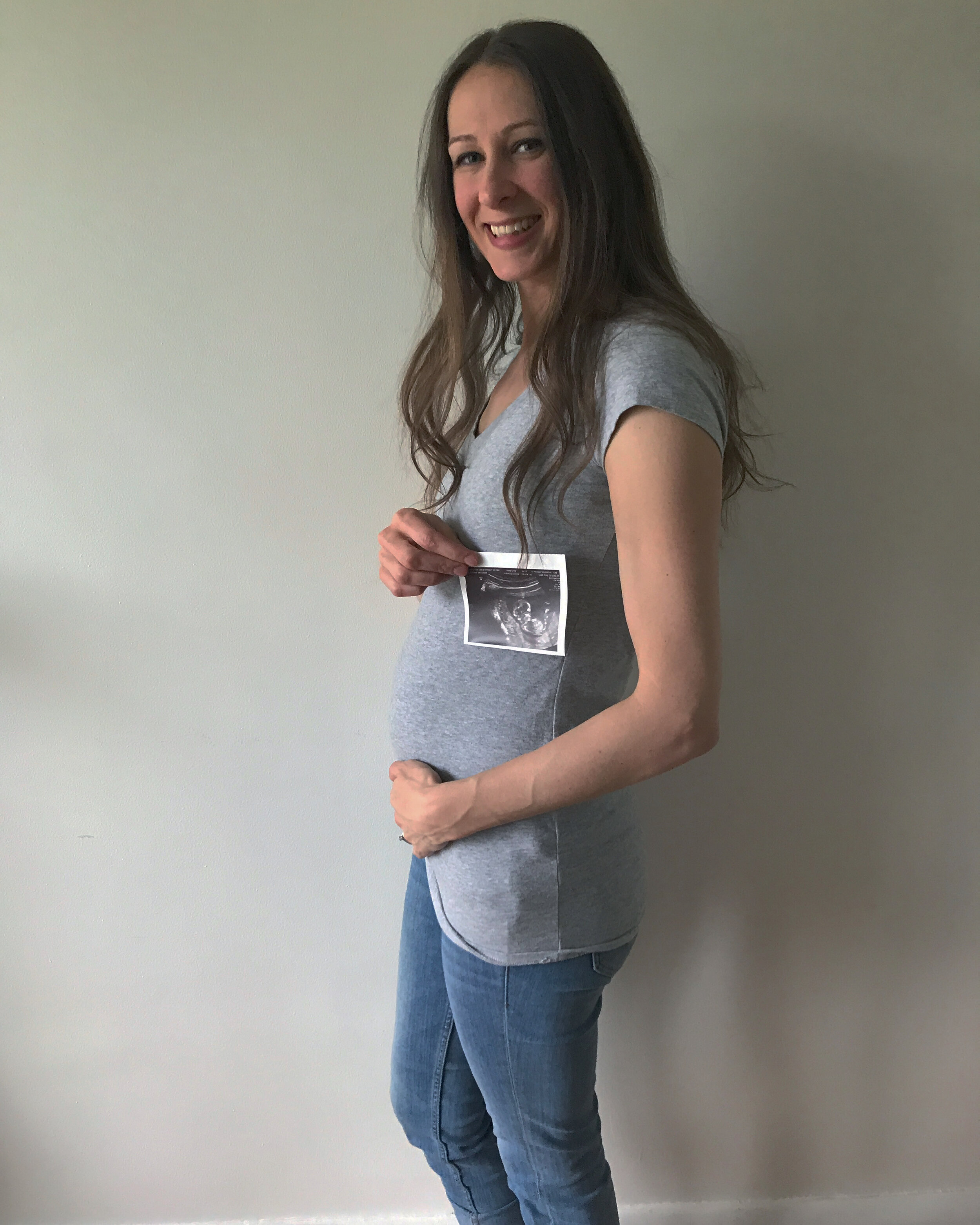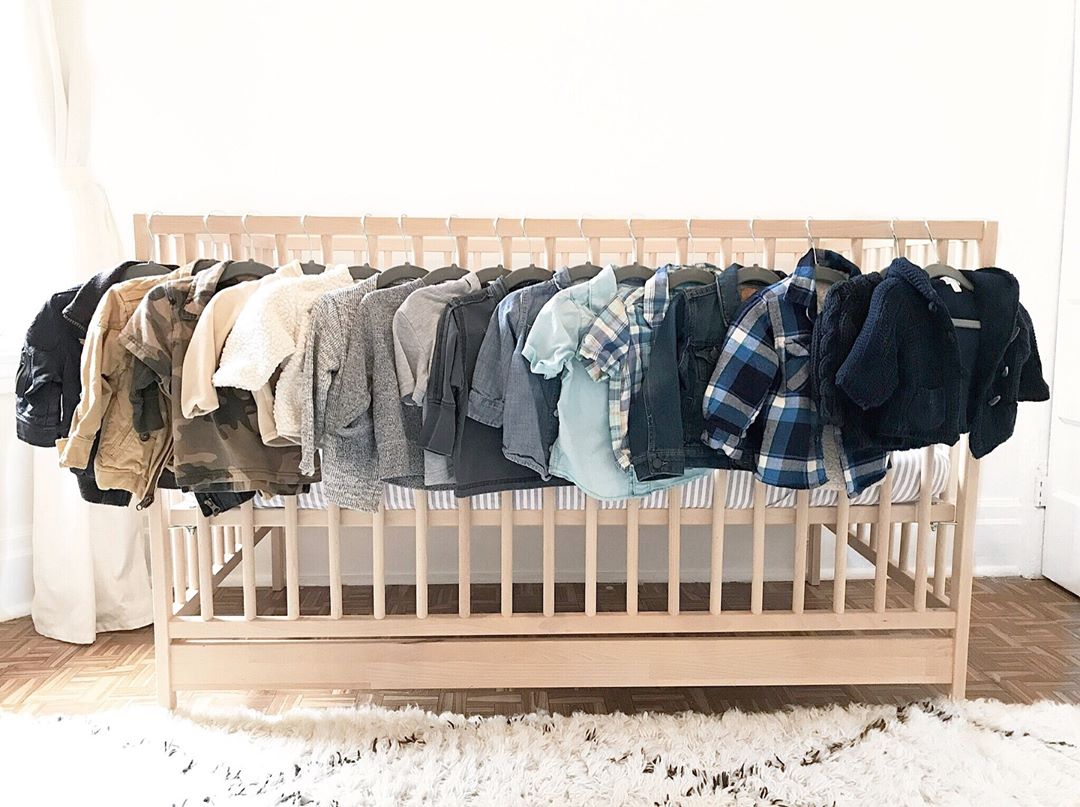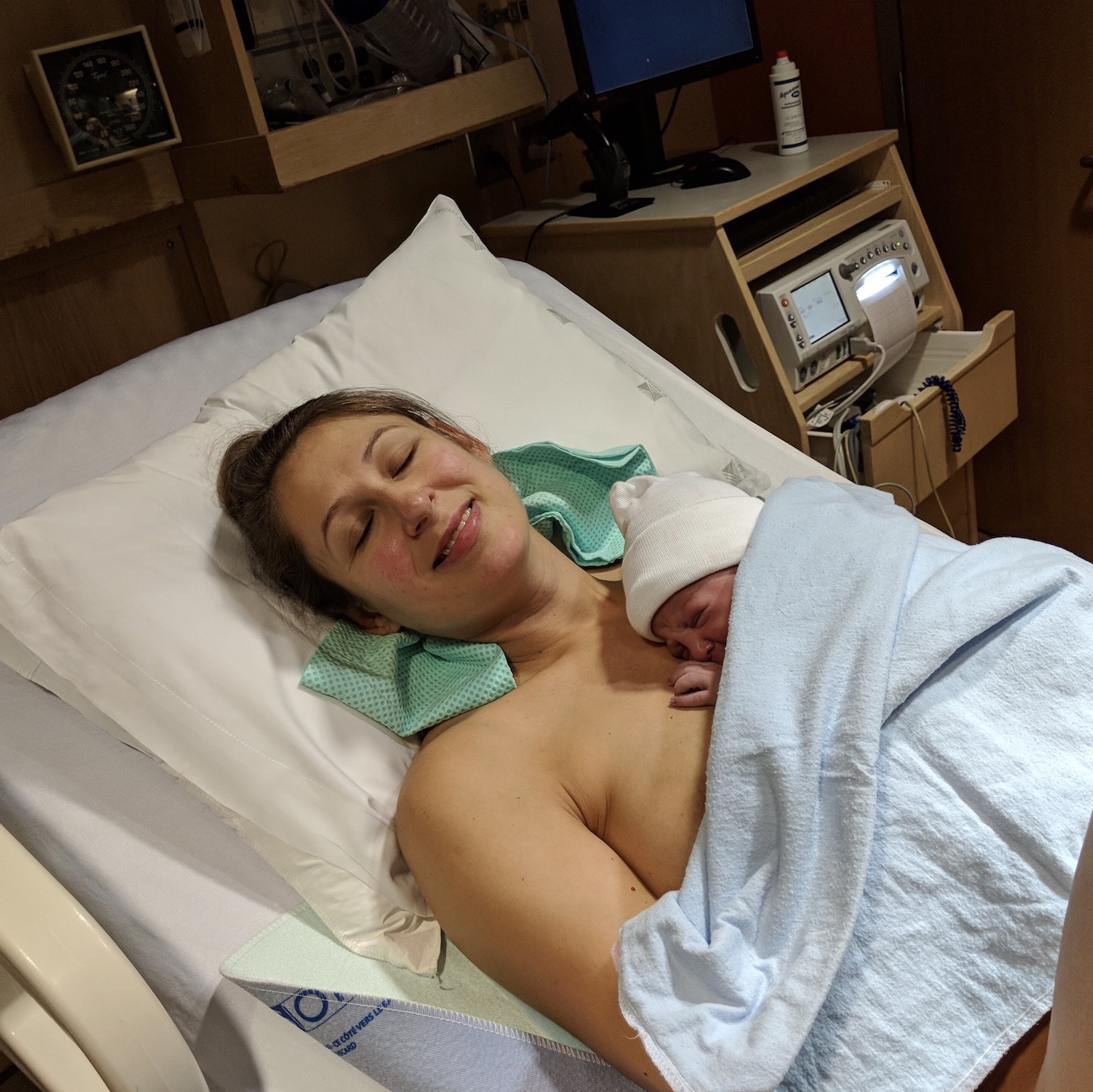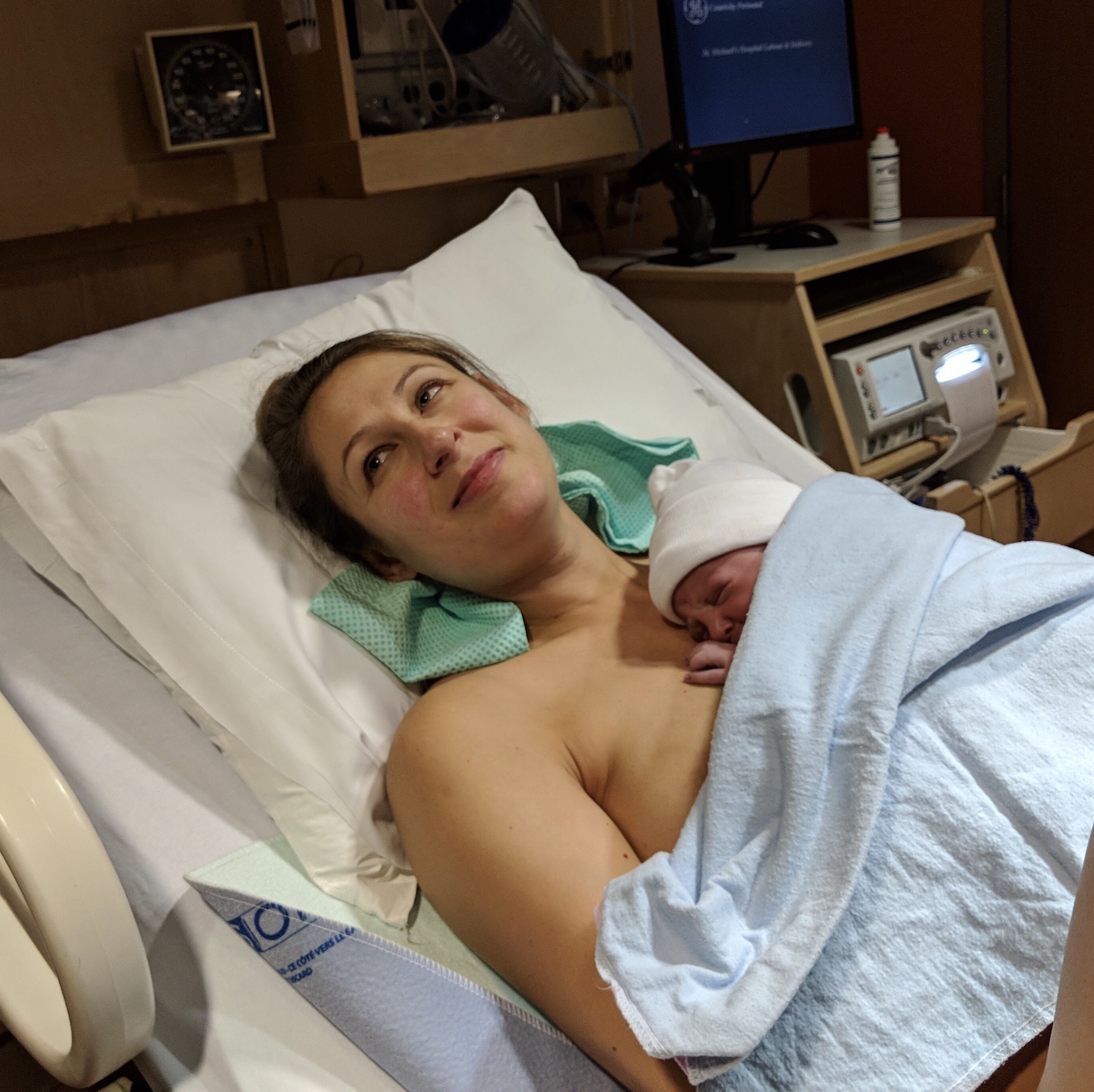DIAPERING
Diapers — Make sure you’re well stocked before baby arrives, they sure do go through a lot of these! We spent a week using Pampers disposable diapers, then, for about the next 11 or 12 weeks we used a cloth diapering service that picks up the dirty diapers and drops off a clean supply weekly, but cloth diapering wasn’t working for us and we switched back to using Pampers, and we order them monthly using Amazon’s Subscribe & Save program. If you’re interested in knowing the differences between the two types of diapering, I wrote an article comparing Cloth vs. Disposal Diapering, you can read that here.
Wipes — You’ll need a lot of baby wipes but I don’t recommend stocking up on this item right away; instead, buy a few packages of different brands to see which kind is best for your baby’s skin, and then buy in bulk once you know which ones won’t cause a skin reaction. We’re using Huggies Natural Care Unscented Wipes.
Diaper cream — anything with zinc oxide is a good idea. Again though, try a few to see which one is best for your baby.
Diaper bag — I wanted something stylish AND functional, and I looked at a ton of diaper bags before landing on the Skip Hop Greenwich Backpack. It’s large, has many compartments, and looks chic with its rose gold hardware. I even used it as my hospital bag - it was the perfect size to hold everything I needed. (You’ll also want to pick up a wet bag for holding dirty diapers when changing on the go.)
Diaper pail — we went with the Ubbi diaper pail and I’m happy with it. It opens from the top by hand, which doesn’t bother me, but if you think you would prefer a pail that opens with a foot pedal you might want to check out the Diaper Genie or something similar.
Diaper caddy — helpful for storing all your diapering needs to carry around to different rooms of your house. This is what I did in the beginning, but quickly preferred just going upstairs to change a diaper in the nursery no matter if I was spending the day on the main floor. I love having the caddy on the changing table.
NURSERY & SLEEP
I’ll be brief here because I’ll be doing a nursery tour post and I’ll include more detail about my nursery room choices in that post, so here’s a quick list plus a few items I wanted to elaborate on:
Crib, mattress, waterproof mattress protector, fitted sheets, change table, changing pad, glider/rocker, footstool, side table, storage bins/baskets, diffuser, baby monitor, books
Bassinet — You’re likely going to have your baby sleeping in your bedroom for at least the first three months, and this is where a bassinet comes in handy. I had a hard time with this item and debated getting one at all because bassinets are so expensive and you only use them for a short period of time. While I was deciding to get one or not, our back-up option was to bring the crib into our bedroom, but we ended up getting a bassinet on loan from our neighbour. Knowing what I know now, a bassinet is essential, and if we weren’t able to borrow one I now believe that this item is worth the high price. It’s so handy to have your baby right next to you and be able to quickly and easily scoop him up when he needs to feed during the night, or to just reach over and lay your hand on his chest to calm him down if he starts fussing.
Receiving blankets — these can be used for multiple purposes: as a swaddle blanket, a burp cloth, a blanket for tummy time, a nursing cover…there are so many ways to use this item, so stock up.
Swaddlers — swaddling is a really great way to calm baby for sleep in their early days. At first we struggled to make our own by folding receiving blankets but he always broke out of them. Eventually, we got these velcro ones by SwaddleMe and they worked perfectly.
Sleep sack — also known as “wearable blankets,” sleep sacks are perfect for babies who are no longer being swaddled but aren’t ready to sleep with a blanket.
White noise machine — we have the Hatch Baby Rest Night Light & Sound Machine and keep it next to our bed so that it’s near the bassinet, but it includes an app so that you can control it with your phone so you can put it anywhere in the room and still adjust the settings. We also have a Sleep Sheep attached to the crib but it’s great for on-the-go, too.
BABY SAFETY & HYGIENE
Thermometer — we have a generic store brand armpit thermometer and a forehead swipe thermometer but I’ve heard that Braun is the best so we’ll be getting one of those soon.
Snot sucker — so gross, but so necessary. Before baby came, I naively thought that babies’ noses only got snotty when they caught a cold. Nope! Babies always have boogers and their tiny nostrils need clearing because they can’t do it themselves. We like the FridaBaby snot sucker.
Nail clippers — you won’t need to cut your baby’s nails for the first few weeks because their nails are soft as skin and they just fold and break off, but once you start needing to cut their super sharp nails, the FridaBaby nail clipper is a good one because it has a “viewfinder” so that you can clearly see what you’re cutting.
Other items for baby safety and hygiene: baby gate, baby-proofing gadgets, soft bristle hair brush, infant Tylenol, Vitamin D drops, probiotic drops (for treating gas).
FEEDING
Breast pump — I’m using the Medela Pump In Style backpack pump and yes, this brand is expensive but it’s worth it (it’s hospital recommended). I bought mine used and then just bought all the replacement parts new and still saved a ton of money. Check with your insurance company, some of them cover breast pumps. For hands-free pumping, pick up a pumping bra.
Breast pump accessories — keep in mind that breast pumps come in different sizes to fit your nipples. I had to buy three sets of breast shields before I found the right one for me. You’ll also need bottles to collect the milk.
Breastmilk freezer bags — if you’re able to pump extra milk and save it, do it! Always good to have it when you need it.
Bottles and nipples — don’t buy too many bottles until you know which ones your baby will like (they are fussy little creatures!). We’re lucky and our baby doesn’t seem to have a preference. My favourite is the Comotomo and dad likes the Munchkin Latch. We also like the Boon Nursh bottles. When it comes to bottle nipples, keep in mind that they come with different flow rates, so check what already comes standard with the bottle you’re buying, and you can buy extra nipples with greater flow rate separately.
Pacifiers — our baby has a preference when it comes to soothers, he will only take the Philips Avent pacifier. I love that it glows in the dark so it’s easy to find when he spits it out at night and wants it back.


